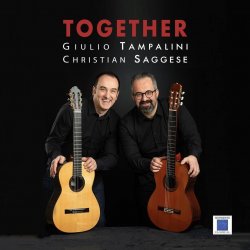
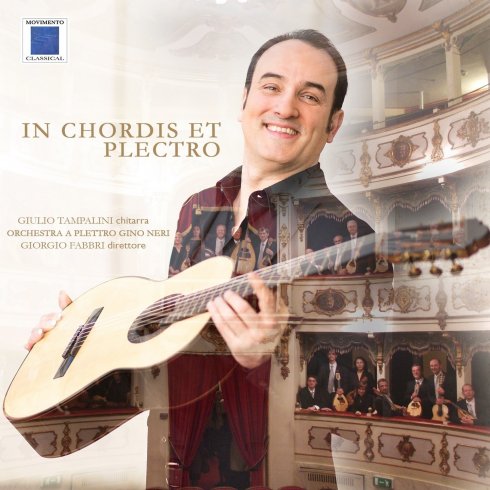
In chordis et plectro
The recording project “In chordis et plectro” wants to give a unique and original listening experience of a wide range of compositions, belonging to different
styles and ages, gathered by the fact that they’re solely performed by stringed instruments, both plucked and plectrum. The soloist guitar - in the hands of a
virtuoso leading performer such as Giulio Tampalini - guides the entire trip from the baroque to the twentieth century, supported, accompanied and enriched by the “Gino Neri” Orchestra from Ferrara, a formation of fifty nonpareil elements in the world for their organic and repertoire, entirely made up of plectrum and plucked instruments. The outcome represents a listening experience without precedents, capable of drawing a kaleidoscope full of rare colors and arousing intense and surprising emotions. The interest in plectrum instruments and their literature spread with great rapidity in the last decades, after the eclipse suffered in the first half of the nineteenth century and the subsequent rebirth from the end of the same century, first determined by Italian composers like Calace, Munier, Manente, Guindani and then by the authors belonging to the German school, such as Hermann Ambrosius, Kurt Schwaen and Hans Gal. The plectrum formations, consequently placed in their own and autonomous area, have therefore reached a dimension of respect first in the Italian and European sphere and then also in the United States, Japan and Korea. On the international scene, the “Gino Neri” plectrum orchestra holds a prominent place, both for the longevity of the musical ensemble and for the peculiarities of its staff as well as for the breadth of the repertoire. Reached in the ambitious goal of the one hundred and twenty year since its foundation in the same year, the “Gino Neri” was awarded the First Prize at the G. Rossini International Competition in Pesaro, testifying to the vitality and the qualified artistic level of its musical activity. The current instrumental staff is unchanged, by type of instrument, keeping faith to the original project of maestro Gino Neri (1882- 1930), the director whose name has been given to the Orchestra. Formed by the entire family of “plectrums” on the basis of the classic tripartite borrowed from the “arches” - with the triad “mandolin-mandola-mandoloncello” - the staff also incorporates other lesser known and widespread instruments such as the quartini mandolins, the contralto mandolas, plectrum bass and double basses, as well as the more classic bowed double basses, which combined with guitars and harp, timpani and percussion make it possible to deal with the entire romantic and late-romantic repertoire in great completeness, made up of the 500 songs of the historical archive of the orchestra, which is now a public library. The present recording work makes use of the prestigious presence as protagonist of the Brescia guitarist Giulio Tampalini, interpreter of great musicality and of clear and excellent technique, that has already hosted more than once at the “Gino Neri”, recognized for the eclectic and multifaceted professionalism, and counted among the virtuous in terpreters of the new generations of guitarists. The different tracks of the album, in a dialectical comparison between them, give shape to a disc where distant authors coexist for artistic caliber, for style and personality, from the baroque era until the second half of the twentieth century. Some of them are of recognized names, others of lesser fame; musicians from different geographical and cultural zones, with works that oppose strong passions, intense colors and different atmospheres, from baroque and classic works to the very suggestive Spanish landscapes. In short, an ideal bond exists between the historical tradition of the mandolin complexes of the past and the modern search for a specific identity of the language, technique and timbre typical of the “plectrum” instruments, by now emancipated from a merely popular consideration and folkloristic, more and more projected to consolidate results of artistic autonomyand musical originality. The soloist guitar and the orchestra in the whole, therefore, confirm their adherence to the dialogue of the ancient and the modern, in support of a stronger identity of string and plectrum instruments, in particular of the mandolin, which today finds a progressive affirmation also in academic field, with the activation of chairs for teaching the instrument in conservatories. The recording begins with the Concerto RV93 in D Major by Antonio Vivaldi (1678 -1741), destined for an organic that seems to have a late-Renaissance archilute as protagonist, supported by strings and basso continuo. Belonging to the two concerts written by the “red priest” dedicated to the lute or similar instruments, it’s set in an age where the Arabic-born chordophone seems to have disappeared for about thirty years: a famous story wants the concert to be devoted to an amateur lover of the lute on his explicit request, Count Johann Joseph von Wrtby (in the manuscript appears the heading “For His Excellency Count...”) The soloist guitar is accompanied here by the Chamber Ensemble Gino Neri, a chamber pick’s formation, born within the orchestra expressly for the performance of the baroque/contemporary repertoire. Next, the full orchestra enters the scene to open the doors to the Italian living room, lit by the elegance of Ferdinando Carulli (1770 - 1841) which is considered with Mauro Giuliani one of the most important masters who knew how to enhance the guitar in the romantic century. The Petit Concert de Société in E Minor Op.140 from the brilliant stylistic elements of the Neapolitan School, written in Paris in the early 1800s and originally composed for guitar and strings - here in the transcription for guitar and orchestra plectrum made by Stefano Squarzina represents the perfect example of the musical repertoire - loved and attended by the bourgeoisie of that time. Open from a theme with an immediate attack of clear Mozartian influence, it explores and develops the extensive virtuosic and expressive resources of the guitar, which penetrate into the intimacy of the next open space and into the radiance of the conclusive cheerful triumph, proposed without solution of continuity. The album continues with Asturias, an urgent and suggestive piece, originally composed for piano in 1890 by Isaac Albéniz (1860-1909), at the time of his London stay. Despite the name, there is no relation to the musical tradition of the Spanish autonomous community of Asturias, its accents recall instead the Andalusian flamenco. Initially the song was not published at all under this title: giving it to the press by Emile Pujol in Barcelona in 1892, Albéniz conceived it as a prelude to the “Cantos de España” collection. Only later did it become the fifth movement of the Suite Española, published after his death with the current title and the subtitle Leyenda in 1911. Concludes the album the Fantasia para un Gentilhombre, written for guitar and orchestra by the composer Joaquin Rodrigo (1901 -1999), here in absolute premiere in the version for guitar, plectrum orchestra and wind quintet. The composition divided into four movements, that consider as main source some pages of Gaspar Sanz, an important exponent of Spanish music and the baroque guitar of the ‘600, and as second source the three volumes entitled “Instrucción de música sobre la guitarra Española”. The work was born from a request by the Andalusian guitarist Andrés Segovia (1893-1987), linked by a long collaboration and friendship with the author: it’s easy to recognize in him the “Gentilhombre” of the title, interpreter of the first world execution held in 1958 in San Francisco under the direction of the master Enrique Jordá. It is perhaps the track of the album that most of all highlights the timbral and expressive characteristics of plectrum instruments, which not only do not regret the strings of the original version, in supporting the lead guitar and interacting with wind instruments, but they draw an identifying and distinctive timbre palette, which takes on a value of its own and gives the listener an exciting and surprising experience. The contribution that Giulio Tampalini and the Orchestra “Gino Neri” intend to offer with this album, goes in the direction to promote the spread of the unique repertoire for guitar and orchestra, offering a new and compelling listening perspective, which opens up to new timbre scenarios, with the aim of enhancing the peculiarities and characteristics of stringed instruments, to enrich their repertoires, and at the same time giving the listener the opportunity to enjoy newand unexpected emotions thanks to music.

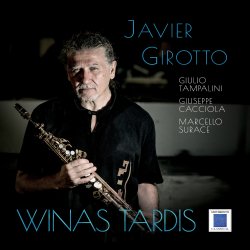
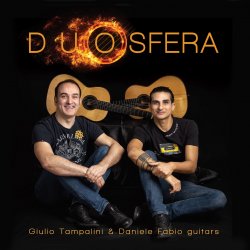
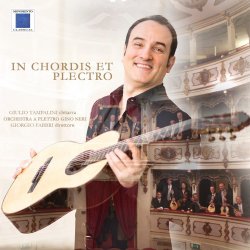
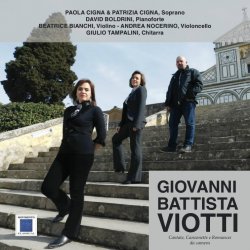
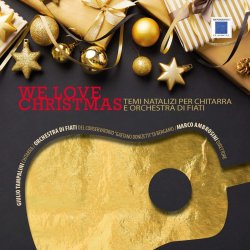
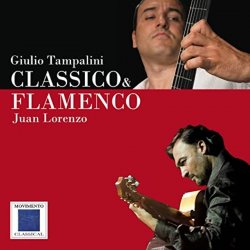
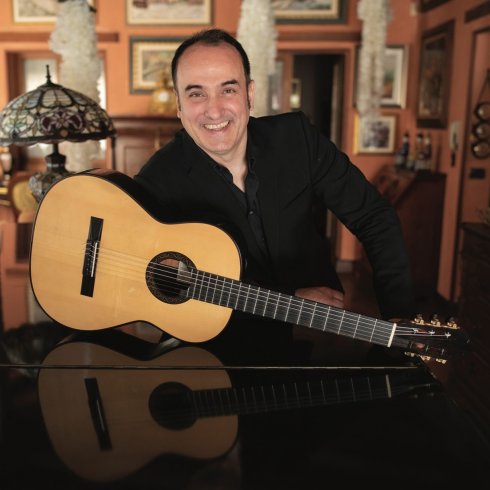
Giulio Tampalini
Giulio Tampalini has been hailed internationally as one of the most popular and charismatic classical guitarists, and as such he performs regularly and extensively in Italy and abroad. Winner of the Arts and Culture Prize (Milan, Italy 2014), he is a Warner Classics Artist, has recorded over 40 CDs and he has played more than 2000 concerts all over the world. He has won prizes at major international guitar competitions such as the “Narciso Yepes” Competition in Sanremo (chairman: Narciso Yepes); the International Rome Competition in 1996 and 2000; “De Bonis” International Competition in Cosenza; “Pittaluga” International Competition in Alessandria; “Fernando Sor” International Competiton in Rome and the “Andrés Segovia” International Competiton in Granada. His musical collaborations include the Soloists of the Teatro alla Scala in Milan. In 2003 his double CD “Francisco Tarrega: Complete Works for Guitar” was awarded the Golden Guitar at the International Guitar Meeting in Alessandria as “Best CD of the year”. Among his other CDs are: the “Concierto de Aranjuez” by Joaquin Rodrigo for guitar and orchestra, recorded with the Orchestra “Arturo Benedetti Michelangeli”; all the major guitar works by Angelo Gilardino; the complete Six Rossinianas by Mauro Giuliani; the Concerto no. 1 op. 99, the Quintet Op. 143 and the Romancero Gitano by Mario Castelnuovo-Tedesco, recorded with the Haydn Symphony Orchestra; the complete works for guitar by Miguel Llobet; and a DVD containing the complete solo guitar works by Heitor Villa-Lobos. Giulio Tampalini is a guitar professor at the Foundation International Academy in Imola and at the Adria State Conservatory of Music (Italy) and he is regularly invited to give masterclasses and concerts all over the world.
